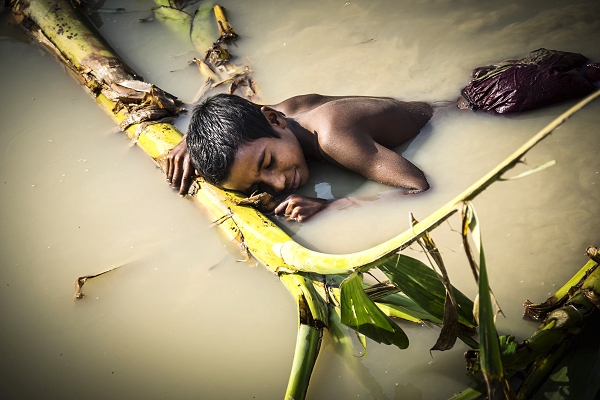
Research: Potentially lethal combinations of heat and humidity double since 1979

New research published Friday in the journal Science Advances is believed to be the first to suggest that the sustained “wet-bulb temperature” (TW) threshold of human survivability – around 35°C – is already occurring in some coastal subtropical locations.
TW is measured by a thermometer encased in a wet jacket and is lowered by the cooling effect of evaporation; it’s equal to the more familiar dry-bulb temperature (T) only when humidity is 100 per cent and no evaporation is possible.
People affected by the lethal heatwaves in Europe in 2003 and Russia in 2010, for example, experienced TW values no greater than 28°C, say the researchers, from NASA’s Jet Propulsion Laboratory and Loughborough and Columbia Universities.
“In the literature to date, there have been no observational reports of TW exceeding 35°C and few reports exceeding 33°C,” they add in their paper, The emergence of heat and humidity too severe for human tolerance.
Sweating
Climate models generally predict TWs at the “upper physiological limit” of 35°C by around mid-century.
But the team write that their evaluation of data from weather stations shows that some coastal subtropical locations have already seen TWs of 35°C and that “extreme humid heat overall has more than doubled in frequency since 1979”.
The research suggests such heat is “highly localized in both space and time” and may be correspondingly underestimated, despite “decades of study in military, athletic, and occupational contexts”.
Yet extreme heat, they add, is “one of the most dangerous natural hazards, with tens of thousands of fatalities in the deadliest events so far this century.”
‘Variate risks’
Even under ideal conditions, rarely present, of “perfect health, total inactivity, full shade, absence of clothing, and unlimited drinking water,” the basic human cooling mechanism of sweating “loses its effectiveness altogether”.
Combined high temperature with high humidity is “maybe the most underappreciated of the direct climate hazards,” study author Radley Horton of Columbia University told the Washington Post.
“People are late to the game in thinking about these multiple-variate risks,” he added.
The team found that under one business-as-usual scenario for emissions, “TW could regularly exceed 35°C in parts of South Asia and the Middle East by the third quarter of the 21st century”, with the risk to health especially severe along coastlines when marine air moves even slightly inland.
*
This study confirms what we are seeing around the world: deadly heat-risks are rising rapidly, writes Climate Centre Director Professor Maarten van Aalst.
The familiar domestic thermometer – giving dry-bulb readings – that we might have hanging up in our kitchens and hallways is certainly good for day-to-day use, and for climatology for that matter.
But from the physiological and humanitarian point of view, it’s the wet-bulb reading examined by these researchers that matters; or, broadly speaking, how hot it feels.
We all know dry heat is more bearable. But now we have a better idea of exactly where the true danger level lies when humidity is factored in, and how close we are to it.
We need to step up our efforts to counter this trend, by improving early warning and early action systems for heat, increasing urban green space, for instance, and, in the longer term, reducing emissions to avoid risks from rising even faster.
Bangladeshi boys escape the heat by cooling off in a river. In 2017 a heatwave definition was proposed for the country which then did not have one, a first step towards the creation of a warning system for the hazard there. (Library photo: Yoshi Shimizu/IFRC)